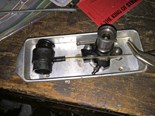VW Kombi Prices + Holden 186 + Car Storage - Morley's Workshop 386



|
Dave Morley gives you the car advice you need - and maybe a bit about life as well
Write to Morley c/o uniquecars@primecreative.com.au
or Unique Cars magazine, 379 Docklands Drive, Docklands, Victoria 3008
MORLEY'S SOAPBOX
EVERY DOG HAS ITS DAY...
Elsewhere in this column, a reader has questioned the present cult of the VW Kombi. And he rightly addresses the elephant in the room: Why are these things so popular when they were pretty awful cars to drive even when they were brand new?
It’s a ripper question, too, and not one that I’m sure I can answer. After all, I’ve been conducting a long-term love-affair with air-cooled products of the Third Reich for decades, so I’m probably not the bloke to ask. But I can tell you for sure that it’s not just old Dak-Daks that have fired the imagination of tappet-heads everywhere (although the appetite for old Kombis is probably the best illustration of the phenomenon I’ve ever witnessed). I’m seeing a lot of cars that you couldn’t have given away a few years back suddenly getting collectors and enthusiasts all steamy in the tweeds.
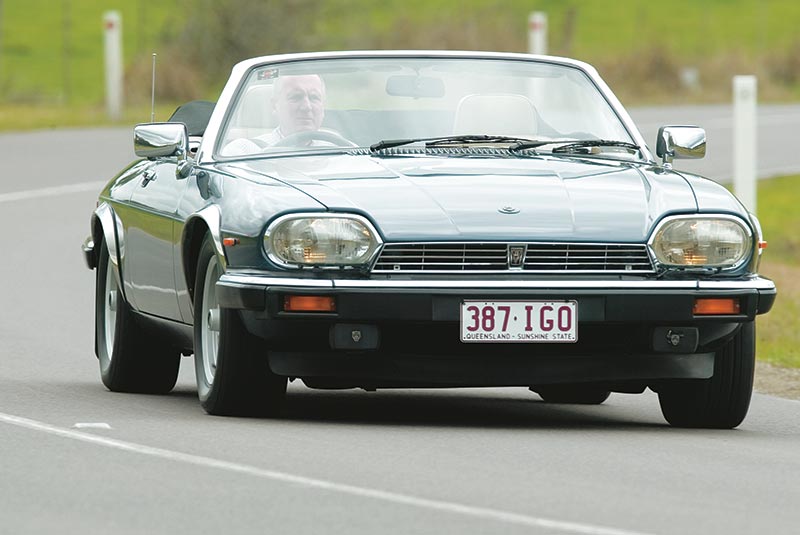
Remember the Jaguar XJS? They were ten deep at the tip a few years back but suddenly they’ve started to gain a foothold in Collector World. I’ll admit, the styling has suddenly come into its own and what was an ungainly looker (compared with the E-Type the XJS theoretically replaced back in the day) is now a pretty svelte looking thing. Personally, you still couldn’t give me a V12 version (which is far and away the most common variety) but a later one (mid-90s) with the four-litre six-cylinder might just sway me on the right day. How about a VN SS Commodore anyone? A good one of those is seriously desirable now, having been dragged from almost total market obscurity.
And what about the second or third-string Aussie stuff. While the local car-collecting scene was losing its mind over 1960s GT Falcons, stuff like the XE ESP and even early Commodore SL/Es were largely forgotten. Not any more, my friends, and something like a VC or VH SL/E in shadow-tone blue and silver with a five-litre up front has real appeal these days. And rightly so.
I reckon cars like these have been ignored for too long, but prices of the frontline collectibles have ensured that we’re suddenly considering the B-graders with new enthusiasm. Not, of course, that any of that explains why people would pay holiday-house money for a tin box with a VW logo on the front and a 1200cc motor.
Meantime, what are the cars that have come into focus for you: The stuff you had all but forgotten about a handful or years ago, but which now occupies a place somewhat closer to your heart?

International spotto
Hi guys, I work in the gas industry (FIFO) and during meal breaks I read a lot of car magazines, especially Unique Cars. I am a great GM fan and seem to be able to pick their models easier. Travelling through Dubai there are a lot of late model Statesmans rebadged as Chevrolets. This also seems to be the case in other places.
Anyway, my main reason for writing is that during a visit to Italy in late 1964, I was surprised to see an EH Premier sedan with Tasmanian number plates. We stopped the driver and found out he was Italian but had emigrated to Hobart. He was so thrilled with his new Holden he had it shipped to Italy for a three month holiday.
Bryan Johnson,
Dunsborough, WA
Hey, nice work Bryan. And so much for the old urban myth that Italian migrants only drove Valiants when they came to Australia. But that’s a heck of a commitment, isn’t it? Shipping your car all the way to Italy for a holiday and then – presumably – shipping it all the way home again. That said, I’ve done similar things with motorbikes over the years, but mainly because I’ve built the bike to do a particular job that might just have been beyond the abilities of the average eBay crapper. Like riding across Central Asia, Mongolia and Siberia, for instance; not the sort of places you want to find out the hard way that your big-end bearing is starting to break up.
But I’ve also taken the plunge and bought a bike from the internet, collected it when I got overseas and then ridden the wheels off it till I was ready to come home. The most adventurous we ever got in that regard was when three of us in 2008 bought eBay 900cc Yamahas in London, rode them to the Isle of Man for a week’s thrashing, put them back on the ferry to Blighty, rode across to the Continent and finally made our way across Syria to Damascus (which, obviously, you wouldn’t do these days).
And that reminds me of your other point which is seeing Aussie-made Holdens badged as Chevys in faraway places. On that particular trip to Syria, my buddy and I were having a cool drink (don’t panic, Syria was a `dry’ country even then) at a roadhouse in the middle of the Syrian desert. Along came a Jordanian guy in a Holden Caprice with Chevy badges. Being the only place to stop for hundreds of kays, he hauled up and we got talking. Yes, he knew his car was made in Australia and, yes, he was very happy with it.
His only gripe was that the Caprice was hard on brake rotors, what with the heat out there and the typically high speeds people tend to maintain when crossing deserts in that part of the world. But I was able to hook him up with a few aftermarket mobs back home who could mail-order him some thicker, less warpy front rotors. I wonder what happened to that bloke. Did he and his Caprice survive the atrocities being played out in Syria right now? You can only wonder.

In praise of the 186
Morley! Don’t ever leave Unique Cars, I love your contributions and the way you deal with things. Look forward to reading your every issue!
Meanwhile, I agree with your respect for the Holden 186 engine. In the early 70s I bought my friend Tommy Easton’s (ex AA Altered drag racer – Google him) primer grey FJ with balanced 186S (steel crank) four-speed Opel box, triple 1 3/4 SUs, 140 Wade cam, modified Yella Terra head, 10-inch rear racing rubber, etc. That car was quite outrageous at the time. In this light body the engine screamed, as much as anything does even today. I consistently ran it to 7000rpm and Tommy once saw 8200rpm (on a correctly calibrated tachometer). The uninitiated once challenged me on this, with a joyride eliminating any doubt.
Over the years the engine never broke and was arguably the car to beat on Melbourne streets then – faster than the 351 GT Falcons and 350 Monaros. When time came to sell, though I accurately described it and actually scared buyers away (though maybe it was my driving).
Also, my mate John’s first car (1971) was a white, red-motored 161 cubic-inch three-on-the-tree HD Holden with 6-inch chromies. He valve-bounced that thing daily, yet it never missed a beat.
I’m also in favour of the discussion on cheap thrills – a timely letter and great suggestion for old buys for new punters. My youngest daughter gets her Ps later this year and has a passion for older cars and we’d both like her to learn on a manual gearbox. So I’m looking forward to reader’s suggestions in the next issue.
Gordon Batt,
Wyoming NSW
I’Ve heard of a lot of Holden red-motored cars serving it up to V8s over the years. And I’m sure it used to happen a lot more often than it does these days. See, back in the 1970s, there was less difference between a good, healthy six and a small-capacity stock V8 from either Holden or Ford than you might have imagined. With a few demon tweaks, a red six could easily be convinced the blow the absolute doors off a 253ci V8 Holden, especially if the former was in an earlier – which is to say, lighter – bodyshell.
Many years ago, a mate of mine bought an LH Torana and was determined to appease the speed gods by fitting a V8. But his dad convinced him to stick with a six, and even built one for him. That little 202 six was known to latch on to V8s on the street and tear them a new one. I should probably mention that this bloke’s dad was none other than Ian Tate, the bloke who built Bathurst-winning Torana XU1 six-cylinder engines for Peter Brock. But you get my point. And even back when I was racing HQ Holdens, the power we were getting from those old lumps – even with a single little Stromberg downdraught carby – would have left a stock 253 HQ with the same gearing choking in the dust.
In fact, even though the Holden red motor was canned 30 years ago, I’m planning a little project that might just resurrect interest in the thing. The idea is to build a wrecking-yard hillclimb race-car. The plan calls for something cheap (and plentiful) so I reckon an early-girl Commodore with its live rear end and rack-and-pinion front end is a good place to start. But will I be putting a V8 in it? Nope: In the interest of keeping it cheap, light and maxing out the fun quotient, this thing will be running a late red motor (called a blue motor, actually) which got the counterbalanced crank and a 12-port head. We’ll be following the project in Unique Cars, so watch this space. I can’t wait. Oh, and the idea is for you lot to be able to follow the project and build your own version on the same kind of shoestring budget.
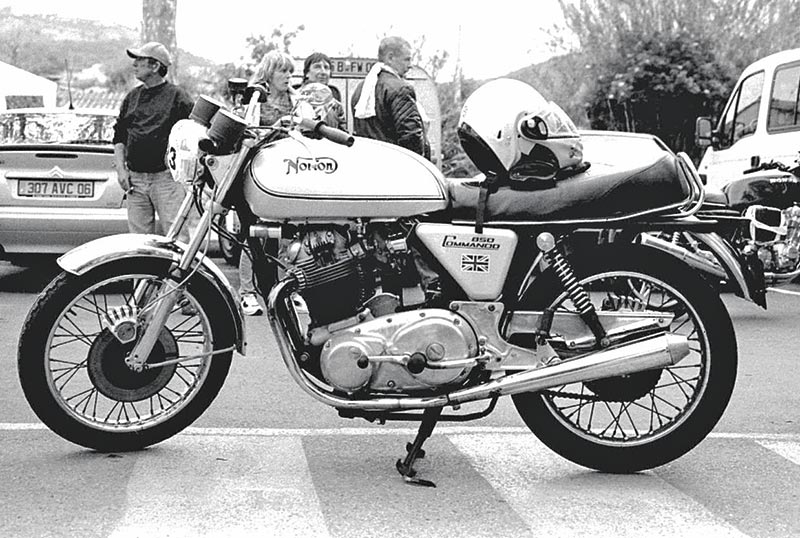
Storage wars
I’d like to add a few thoughts to the question raised by Rachael in San Remo, NSW, in regards to storing a car for long periods. I am a trade qualified car mechanic and have been obsessed with cars from when I was a small child.
Usually I would leave the car on its wheels when storing it. Many vehicles have vulcanized rubber bushings for control arms etc and these only have a limited range of movement. When you install these bushes they are tightened with the wheels on the ground so that they are in their natural position at the vehicle’s normal ride height. When the car is raised (or suspension is compressed) the bush twists one way or the other. So by having the suspension hanging for long periods you are likely to reduce the lifespan of such bushes.
Another main point is the phenomenon of water marks in the cylinders. Condensation occurs inside engines. Every time I pull apart an engine, I can tell if it’s been sitting for long periods because you can see rusting where the rings sat in the cylinders. This doesn’t go away and reduces the condition of the engine, causing loss of compression, oil consumption etc once the engine is put back into service.
A little oil down the cylinders when the vehicle’s being stored would prevent this. I personally turn the engine over afterwards with the spark plugs out (oil may squirt out, but it coats everything including the valves with the corrosion inhibiting oil).
Make sure there’s a strong mix of corrosion inhibiting coolant in the cooling system (simply draining the system will leave a certain amount of soon-to-be-rusty water and condensation in the system). In carburettor cars I would disconnect the fuel line to the mechanical fuel pump (or do something similar) temporarily and run the carburettor dry.
Mice can get into a vehicle and over time can cause extensive damage. Baits are cheap insurance.
I have an XY Falcon which was stored in a shed and unmoved for 15 years until recently. The car was stored in 1999 then basically patched up, resprayed and registered in 2014. The probably 20-year-old Bridgestone Eager tyres which it sat on were fitted to a friend’s daily driver car and used for around 12 months until they were thoroughly worn out.
The carburettor was full of gunk from the petrol which was in it, the radiator was full of rusty crud (replaced), and the car’s (non-original) engine was replaced after a some months of daily transport use because it burned too much oil. The gearbox and diff seemed unaffected by storage and the vehicle travelled some 30,000km since then. Most of the suspension was okay, besides usual wear stuff like ball joints, idler arm etc which were replaced.
Craig Gilmour,
Woomelang, Vic
I reckon you’re on to something with leaving the suspension at full droop for long periods and what that might do to the suspension bushes. The fact that you only fully tighten a replacement bush after the car is back on its wheels at its normal ride height suggests that that’s where the bush would be most happy for an extended period of not moving. The mighty Norton Commando motorbike of the 1960s and 70s used a rubber-mounted engine, gearbox and rear swingarm to damp out vibrations from the big parallel twin engine. Obviously, the handling of the bike was dependent on those bushes (if they flogged out, the bike became a wibbly wobbly old bus of a thing) and the advice at the time was to leave the bike parked on its side-stand, not the centre-stand which left the rear wheel dangling in mid-air. I guess it comes down to whether you’d prefer to replace the suspension bushes or the tyres when it comes time to recommission the vehicle.
Love the advice on mouse baits, too. Hadn’t thought of that, but when you see what a single, hungry mouse can do to upholstery or a wiring loom, it’s a great tip. On the subject of critters getting inside the car, maybe an air-freshener on the rear-view mirror wouldn’t be a bad idea either.
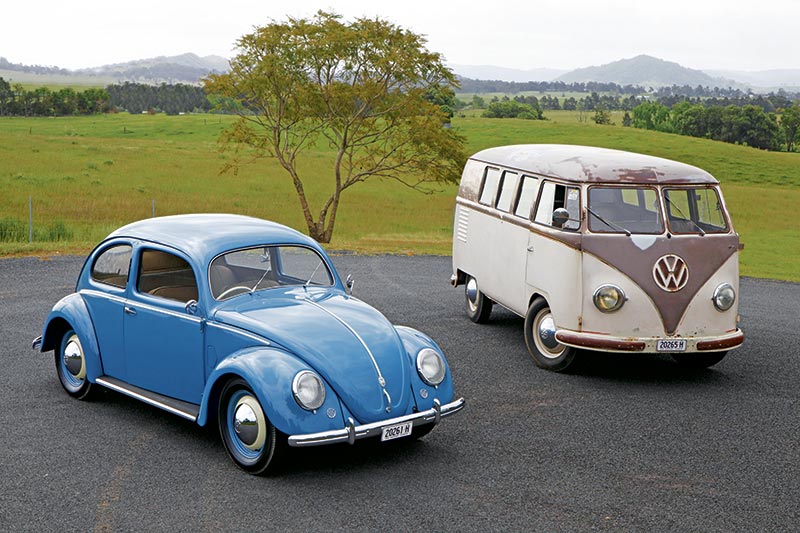
Van Ordinaire
What the hell is going on with the value of VW Kombi vans? I actually owned one of these things when I was a kid, only because I was poor and I needed to carry surfboards. Mine was a 1965 or 66 (I can’t remember exactly) and I couldn’t wait to earn some money so I could get rid of the goddam thing and get a proper car. It was slow, noisy and I figured that if I ever hit anything, my legs were the crumple-zone. Flat out at 90km/h (unless you were coming down the Bulahdelah Pass on the Pacific Highway) and about as comfortable as sitting in a 44-gallon drum while somebody hit the side of it with a seven-iron.
And now what do I see? I see people paying drug-money for the things. What the…?
Kel Simmons,
Kempsey, NSW
The cult of the Kombi sure as heck is an interesting one, Kel. And it really is pretty hard to explain. I guess, at the end of it all, people just have this thing for nostalgia as they get older, and sometimes it’s nostalgia for things that were never really much good in the first place. But you know what they say about nostalgia: It’s not as good as it used to be.
Regardless of what’s driving the Kombi craze, the phenomenon itself is nothing short of amazing. Given Australia’s kind-to-cars climate, we have a great supply of restorable split-window Kombis. And plenty of Aussie Kombis end up being shipped overseas. Then again, the word `restorable’ means vastly different things to different people. Take a look at some online video sites and you’ll see amazing Kombi rescues and restorations; cars that would have been scrapped here years ago as being too far gone. In fact, there’s one online video of a bunch of Scandinavians (I think) who find an old Kombi in an inaccessible swamp, dig what’s left of the VW out of the mud and then actually charter a helicopter to carefully air-lift the remains to their waiting trailer. Madness.
The Brits are crazy for these things, too, and I’ve seen cases where a restorer has patch-welded the entire car from the door handles up and then replaced every panel from the door handles down. And then fitted new door handles. Replacing the bottom 18 inches of a Kombi? No problem.
Makes me wonder, though, exactly how much of the original Wolfsburg metal still exists. As in, would a Falcon GT with the same level of bodyshell replacement still be regarded as a true GT? I mean, if you look at the law as it pertains to this sort of stuff, riveting a set of GT tags to a non-GT shell is a no-no, right? At least it is if you then present the car for sale as a pukka GT.
The thing I can’t figure out is why nobody has started making replacement split-window Kombi shells in nice, new, galvanised steel. You can buy a new Mustang shell in the States and even the humble Ford Escort, MGB and Mini are being remanufactured by a variety of companies around the world. Surely, a 2016 split-window Kombi would have to be a goer.
I’m kind of with you on the way these things drive, too, Kel. But I don’t think the actual driving experience is what people are after. Like I said, it’s that nostalgia thing.
Either way, I wish I had a shed full of old Kombis right now. What happened to yours?
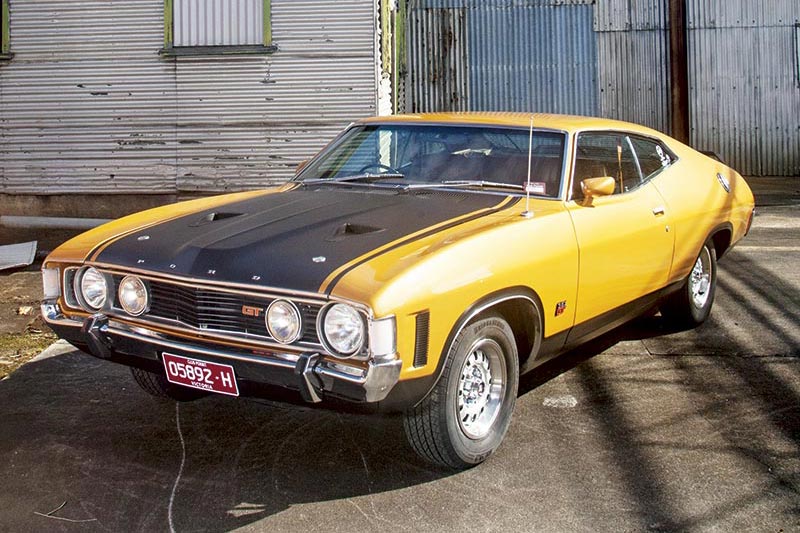
Smelling the light
My brother and I have been working on my latest toy, an XA Falcon 500. I’m not very old, but I really like these older Falcons and I reckon the XA was the best looking of the bunch. Anyway, a while back, I stumbled onto a GT grille for an XA, and figured I’d fit it to my car. Problem was, that left two big holes in the grille where driving lights should go.
I managed to find a set of lights that would fit even though they’re not the genuine ones, and I even had mounts made that located the spotties in the right place in the grille.
Then we hooked the lights up to the electricity and that’s where things have stalled. The first time I turned the lights on to high-beam, I started to smell a hot, burning kind of smell. Also, before that happened, the lights appeared very yellow instead of the bright white that driving lights should put out (I would have thought). My brother reckons I’ve wired them up wrong, but all I did was splice them into the existing high-beam circuit, just as Ford would have done at the factory. Unless the GT wiring loom was different to mine, I can’t think where I’ve gone wrong. Help.
Josh Pearson,
Canterbury, VIC
Josh, do me a big favour. Go out to your car and disconnect the battery right now. You’ve wired the driving lights up all wrong and the risk is that the car is going to catch fire. The burning smell you’ve noticed is probably the standard headlight switch (which was never designed to cope with the current-draw of your new spotties) starting to melt.
In a way, you’ve answered your own question: Yes, Ford did fit a different wiring loom in its cars with factory driving-lights fitted. The extra bit was a relay which uses a low-current circuit (from your headlight dip-switch switch) to operate a high-current circuit (the one that connects your driving-lights to the battery). Without this, you’re risking a melt-down that could cause a fire or even have all your headlights go paff (when the headlight switch finally implodes) just when you need them most.
The good news is that just because your car didn’t have this relay as standard, you can easily fit one. My preference is for a relay with an inbuilt fuse as that’s a little extra protection again. And buy an aftermarket relay; the genuine one Ford used on GTs can still be had, but you’ll pay two or even three hundred bucks (or more) for one, such is their rarity of these cars and the obsessive nature of GT collectors. An aftermarket relay shouldn’t cost more than $20. Meanwhile, if in doubt, talk to an auto sparkie.

Sleep baby, sleep
Here’s my blueprint for the perfect sleeper: A Toyota HiAce van with a mid-mounted LS1 V8 from a Commodore. That should git `er done.
Curly Hamilton,
Albany, WA
Ah, Curly, you are a man after my own heart.
As I’ve said on these pages many a time before, sleepers are probably my first automotive love. But here’s the bad news; it’s been done before. In fact, quite a few white parcel vans of various descriptions have been fitted with precisely the sort of conversion you’re talking about.
I doubt that any of them were ever truly road-legal, but with tinted windows and a quiet exhaust, who’s gonna know? (Not that I’d ever condone activity of a legally dubious nature, of course. Perish the thought.)
Probably the best-known example of such madness occurred in the early 1970s when Ford in the UK commissioned a Transit van with a GT-40 chassis and its 400-horsepower V8 hidden under it. Dubbed Supervan, the thing allegedly had a top speed of about 150 miles-per-hour (call it 240km/h) but the dodgy aerodynamics of the Transit body mean that aero-lift could be a problem as you approached that limit. But Ford wasn’t happy with just that and, in 1984, it debuted Supervan 2 which was, by now, a fibreglass copy of the then-current Transit body on top of a Cosworth DFL engine. It was timed at 174 miles-per-hour (280km/h). And finally, there was Supervan 3 which arrived in 1994 as a seven-eighths scale-model of a gen-five Transit with a Formula 1-spec, 650-horsepower Cosworth powering it.
The biggest problem with your HiAce would probably occur when you goosed the throttle and the V8 sucked all the air out of the interior, causing everybody on board to pass out. That and getting a parcel van to take corners at 200km/h. But I like the concept. Any more out there?
TRIVIAL PURSUIT
Reverse Engineering
The Daimler-Chrysler Tiptronic transmission in the Porsche 996 Turbo features two reverse gears: one standard (1.93) ratio) and a lower second ratio (3.16) selected by the TCU for climbing steep driveways when the engine is cold.
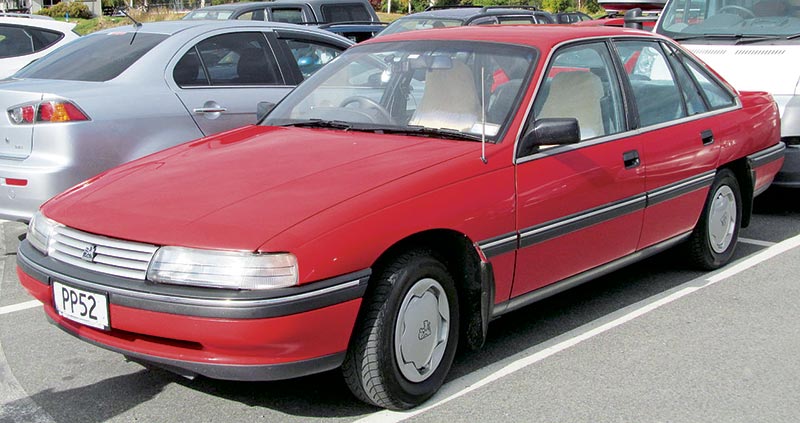
Weak Source
Most Aussie car fans know about V8 Statesmans being sent to the Middle East as Chevs, but did you know there was a 2.0-litre six-cylinder Commodore? The VL had a Nissan 2.0-litre six in it for New Zealand and some other export nations and the VN was engineered with the ex-Camira Family II 2.0-litre four-pot… And low diff gears.
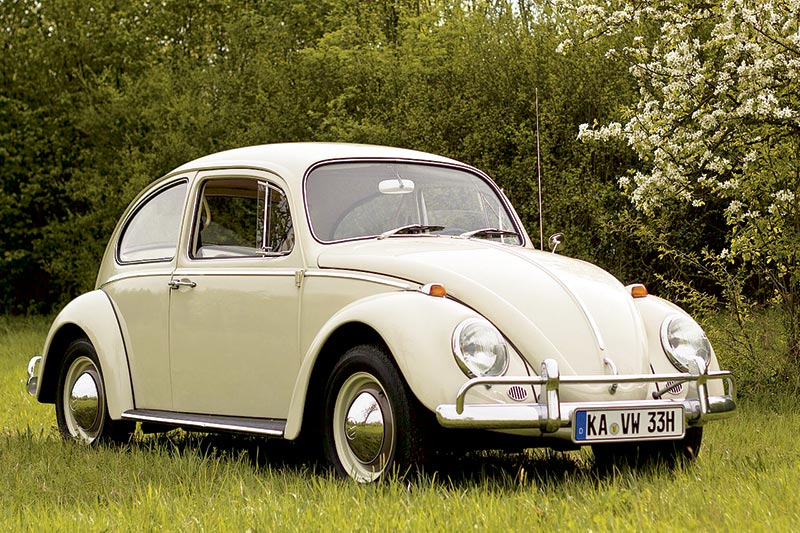
G'day, Bugalugs!
Volkswagen Beetles were manufactured in Clayton, Victoria until 1968. But the German-made cars had an extensive update in 1965. That’s why many Beetle owners end up with parts that don’t fit when they buy ‘1966-onwards’ parts for their Aussie-made Bugs from overseas suppliers.
HERE'S MY TIP
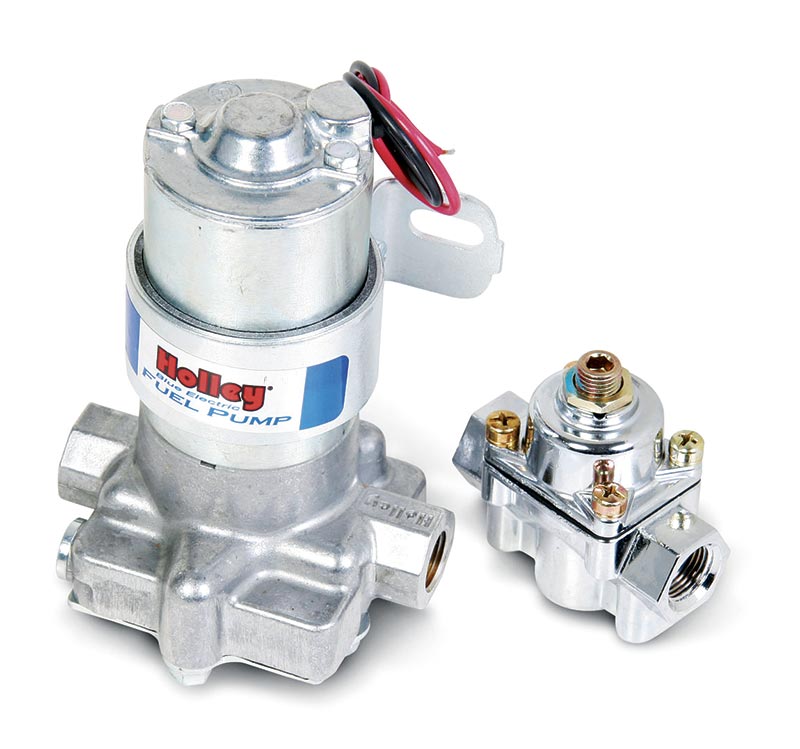
If you’re installing an electric fuel pump in your car – to replace a dodgy mechanical one, or to provide more juice for a performance upgrade – make sure the controlling relay is installed with a kill circuit to either the oil pressure or generator warning light circuits. That way it won’t keep running if the ignition is on and the engine (or you!) isn’t – like after a crash. Try Googling for the kill circuit wiring diagram and an impact switch from a later-model Ford Falcon is a good
idea, too.
Unique Cars magazine Value Guides
Sell your car for free right here
Get your monthly fix of news, reviews and stories on the greatest cars and minds in the automotive world.
Subscribe

.jpg)









.jpg)



